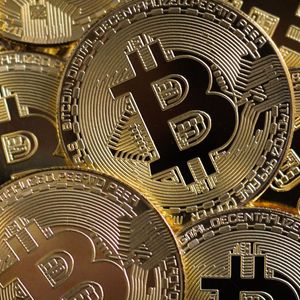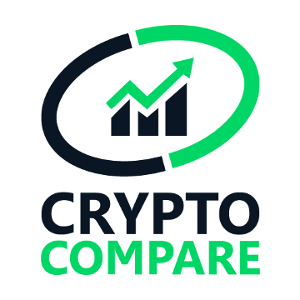Silver is making headlines again! Despite lingering economic uncertainties and fluctuating market sentiments, Silver Price Forecast remains remarkably bullish. XAG/USD has spectacularly rallied, surging past the $33 mark. But what’s fueling this impressive ascent, especially when concerns around Trump’s tariffs seem to be easing? Let’s dive into the factors propelling silver’s surge and what it means for investors. Decoding the Silver Rally: Why is XAG/USD Surging? The Silver Rally is catching the attention of traders and investors globally. In Friday’s North American session, XAG/USD witnessed a remarkable surge of over 2.5%, reaching levels near $33.30 – a peak not seen in over three months. This impressive climb occurs even as the immediate threat of a global trade war recedes and expectations solidify around the Federal Reserve maintaining a restrictive monetary policy. Let’s break down the key drivers: Trump Tariff Fears Ease, but Uncertainty Lingers: While investors initially braced for a detailed reciprocal tariff plan from former US President Donald Trump, his actual announcement was less aggressive. Instead of immediate tariffs, Trump directed the Commerce and Treasury departments to develop a reciprocity plan. This delay, perceived as a softer stance than anticipated, has temporarily calmed trade war anxieties. Dollar Weakness Boosts Silver: The easing of tariff fears has had a direct impact on the US Dollar. The US Dollar Index (DXY) has retreated, revisiting a four-week low around 106.80. A weaker dollar typically makes dollar-denominated assets like silver more attractive to holders of other currencies, thus driving up demand and prices. Steady Fed Rate Expectations: According to the CME FedWatch tool, the Federal Reserve is widely expected to hold interest rates steady in its next three policy meetings. This expectation of stable, rather than increasing, interest rates is generally supportive of silver prices. Silver, being a non-yielding asset, becomes relatively more appealing when returns on interest-bearing assets are not increasing. Technical Analysis: Reading the Silver Price Forecast Charts From a technical perspective, the Silver Price Forecast looks increasingly positive. XAG/USD has decisively broken above the critical resistance level of $32.50, a level marked by the December 9 high. Several technical indicators reinforce this bullish outlook: Moving Averages Signal Bullish Momentum: The 20-day Exponential Moving Average (EMA), currently around $31.60, is sloping upwards, indicating a strengthening upward trend in silver prices. Relative Strength Index (RSI) Confirms Strong Momentum: The 14-day Relative Strength Index (RSI) is oscillating within the 60.00-80.00 range. This positioning strongly suggests bullish momentum and indicates that buying pressure is dominant. Key Support and Resistance Levels: The previous resistance level of $32.50, the December 9 high, now acts as a crucial support level. On the upside, the October 31 high of $33.90 stands as the next significant barrier for silver prices to overcome. Technical Indicator Value/Level Interpretation 20-day EMA $31.60 (and rising) Bullish Trend 14-day RSI 60.00-80.00 Strong Bullish Momentum Key Support $32.50 Price floor Key Resistance $33.90 Price ceiling Why Consider Silver Investment? Exploring the Fundamentals Silver Investment continues to be a topic of interest for both seasoned and novice investors. But why do people choose to invest in silver? Silver’s appeal stems from a variety of factors, making it a unique asset in the investment landscape: Historical Store of Value: Like gold, silver has a long history as a store of value and a medium of exchange. In times of economic uncertainty or currency devaluation, precious metals like silver can retain their value, offering a degree of financial security. Portfolio Diversification: Investors often turn to silver to diversify their investment portfolios. Its price movements are not always perfectly correlated with stocks or bonds, making it a useful tool for risk management. Hedge Against Inflation: Silver is often considered a hedge against inflation. During periods of rising inflation, the purchasing power of fiat currencies can erode, while precious metals tend to maintain or increase their real value. Industrial Demand: Beyond its monetary role, silver has significant industrial applications. Its exceptional electrical conductivity makes it crucial in electronics, solar energy, and various other sectors. This industrial demand adds another layer of fundamental support to silver prices. Factors Influencing Silver Price Forecasts: What to Watch? Predicting the Silver Price Forecast accurately requires understanding the multitude of factors that can influence its price. These factors span geopolitical events, macroeconomic trends, and industrial dynamics: Geopolitical Instability: Events like wars, political crises, or international tensions can drive investors towards safe-haven assets like silver, increasing demand and prices. Recession Fears: Concerns about economic recession can also boost silver prices. As economic growth slows and uncertainty rises, investors may seek refuge in precious metals. Interest Rate Environment: Interest rates play a crucial role. Lower interest rates tend to be favorable for silver, as they reduce the opportunity cost of holding a non-yielding asset. Conversely, higher interest rates can make silver less attractive compared to interest-bearing investments. US Dollar Strength: Since silver is priced in US dollars (XAG/USD), the strength of the dollar has an inverse relationship with silver prices. A stronger dollar can put downward pressure on silver, while a weaker dollar can propel prices higher. Industrial Demand Dynamics: The health of the global economy, particularly industrial sectors in the US, China, and India, significantly impacts silver demand. Increased industrial activity boosts silver consumption, while slowdowns can reduce demand. Gold’s Influence: Silver prices often move in tandem with gold prices. Gold’s movements, driven by similar safe-haven and macroeconomic factors, can significantly influence silver’s price direction. The Gold/Silver ratio is a key metric to watch, indicating the relative value between the two metals and potentially signaling undervaluation or overvaluation. Industrial Demand: A Key Pillar for Silver Prices The robust industrial demand for silver is a critical element supporting its price. Silver’s unparalleled electrical conductivity – superior to even copper and gold – makes it indispensable in numerous industries. Consider these sectors: Electronics: From smartphones to computers, silver is a vital component in electronic devices due to its conductivity. Solar Energy: Silver paste is used in solar panels to conduct electricity, making it essential for the growing renewable energy sector. Automotive Industry: Silver is used in car electronics, including sensors and control systems. Medical Applications: Silver’s antimicrobial properties make it useful in medical devices and coatings. Economic activity in major industrial nations like the US, China, and India is a key driver of silver demand. China’s vast manufacturing sector and India’s growing economy, alongside US industrial output, heavily influence global silver consumption. Furthermore, in India, cultural demand for silver jewelry adds another layer of price sensitivity. Silver vs. Gold: Understanding the Relationship Silver Price Forecast is intrinsically linked to gold’s performance. Silver often mirrors gold’s price movements, albeit with greater volatility. Both are considered safe-haven assets, and their prices are influenced by similar macroeconomic factors. However, some key differences and relationships are worth noting: Safe-Haven Status: While both are safe havens, gold is generally considered the premier safe-haven asset, attracting more investment during extreme risk-off periods. Silver, while also benefiting, may see comparatively less pronounced gains in such scenarios. Gold/Silver Ratio: This ratio, calculated by dividing the price of gold by the price of silver, indicates how many ounces of silver are needed to buy one ounce of gold. A high ratio might suggest silver is undervalued relative to gold, while a low ratio could imply gold is undervalued. Investors use this ratio to gauge potential trading opportunities between the two metals. Volatility: Silver tends to be more volatile than gold. Percentage price swings in silver are often larger than those in gold, offering potentially higher returns but also greater risk. Conclusion: Navigating the Silver Price Forecast The Silver Price Forecast currently paints a bullish picture, with XAG/USD demonstrating strong upward momentum. Easing Trump tariff fears, dollar weakness, and steady Fed rate expectations are providing tailwinds. Technically, silver has broken key resistance levels, and indicators suggest further potential gains. However, investors should remain vigilant. Geopolitical events, shifts in economic outlook, and changes in industrial demand can all impact silver prices. Understanding these dynamics and conducting thorough research is crucial for making informed Silver Investment decisions. The white metal presents exciting opportunities, but like all investments, it requires careful consideration and awareness of the inherent risks and potential rewards. To learn more about the latest Forex market trends, explore our articles on key developments shaping precious metals and macro trends.


















